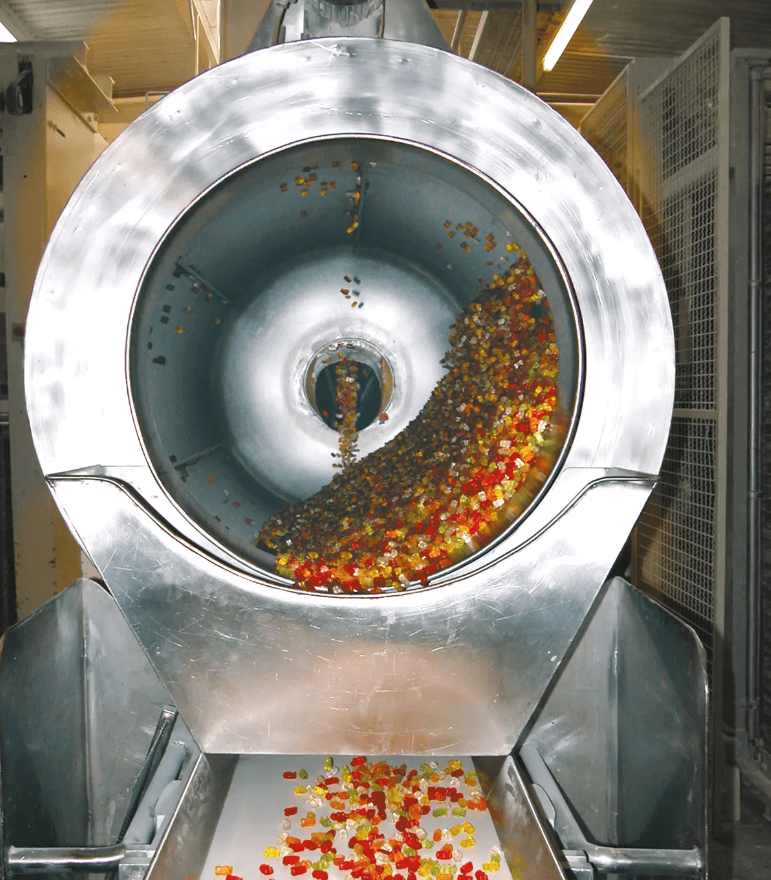HARIBO
HARIBO Client Success Story

HARIBO is a renowned German confectionery company, established in 1920 by Hans Riegel in Bonn, Germany. The company name is an acronym formed from Hans Riegel, Bonn. HARIBO is famous for creating the original gummy bear, a staple in the world of sweets and a beloved treat for many generations. Its signature product, the "Goldbären" (Gold Bears), has become an iconic symbol of the brand, representing the company's commitment to quality and joy.
Industry/ sector:
Fast Moving Consumer Goods (FMCG)
Consultant name:
Kapil/Milind
Customer name:
HARIBO
Location:
NL/BE
Website of the customer:
https://www.haribo.com/
Software solution implemented:
SAP APO - Demand Planning
Project start date:
01-04-2022
Project end date:
04-11-2022

Client Business
HARIBO is a renowned German confectionery company, established in 1920 by Hans Riegel in Bonn, Germany. The company name is an acronym formed from Hans Riegel, Bonn. HARIBO is famous for creating the original gummy bear, a staple in the world of sweets and a beloved treat for many generations. Its signature product, the “Goldbären” (Gold Bears), has become an iconic symbol of the brand, representing the company’s commitment to quality and joy.
Over the years, HARIBO has expanded its product line to include a variety of gummy candies, licorice, and other treats. The brand is characterized by its colorful and playful candy varieties, which are marketed with the slogan “Haribo macht Kinder froh – und Erwachsene ebenso,” translating to “Haribo makes children happy – and adults as well.”
With a presence in over 100 countries, HARIBO has solidified its position as a global leader in the candy industry, operating multiple manufacturing facilities across Europe, where it continues to produce confections that appeal to a diverse customer base with its combination of tradition, innovation, and dedication to excellence.
Challenges

BCG Solution
In accordance with the initial assessment, The BENE project was strategically split into two phases:
Customer Hierarchy Set-Up, and
Statistical Forecasting Set-Up
The first phase is centered on the configuration of the customer hierarchy. The primary aim is to conduct an in-depth analysis of the existing customer hierarchy and, where necessary, restructure it to enable a more efficient, aggregate-level operation within Demand Planning.
The proposed solution entails mapping ‘Sold To’ customers from the S4 HANA system to the Level-4 customer category within APO. This will be accomplished through the creation of a custom table which will facilitate the association of ‘Sold To’ customers to the Level-4 customer classification according to the established hierarchy in the S4 HANA system.
For the BENE region, 11 customer groups were established, resulting in a significant simplification of the Demand Planning process. This restructuring led to an 82.5% reduction in the number of Customer-Product combinations (CVCs), decreasing from 40,000 to 6,953. Consequently, this has facilitated a more manageable approach to working with aggregated customer levels.

The second phase
is dedicated to refining Demand Planning. The goal is to establish a Statistical Forecasting model within APO-DP specifically for the BENE region. This model aims to eliminate the need for manual forecast entry from Excel, incorporating functionality that allows for percentage-based adjustments to the statistical forecast at an aggregate level.
The solution approach involved a thorough analysis of sales history for the BENE region to pinpoint products that would benefit from Statistical Forecasting. Sales data was transferred from the APO Production system to the APO Test system and Comprehensive testing & analysis were performed on all SKUs. SKUs were categorized into A, B, and C segments. A significant majority of SKUs were deemed appropriate for Statistical Forecasting based on the statistical analysis conducted.
Various forecasting models, including an Automatic Model Selection procedure within SAP APO, were utilized to generate the Statistical Forecast. After evaluating various simulation outcomes, it was determined that the Adaptive Forecasting functionality (Strategy-56) would be implemented for the BENE region.
This approach enables the APO system to autonomously identify optimal forecast settings, including both models and parameters, during background processing. For each defined data set, the system calculates the most effective profile and applies it accordingly.
Benefits

Request a Demo with one of our specialists today
About BCG
We are Supply Chain Experts dedicated to helping our customers achieve success.
BCG HQ:
Blasiusstraat 96A, 1091 CX Amsterdam,
The Netherlands

